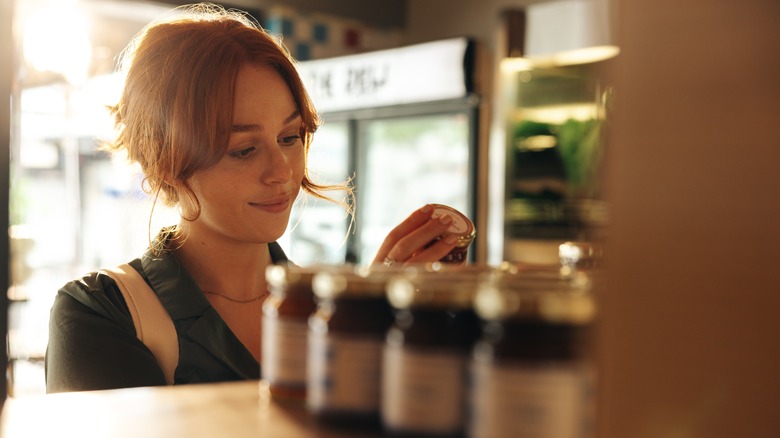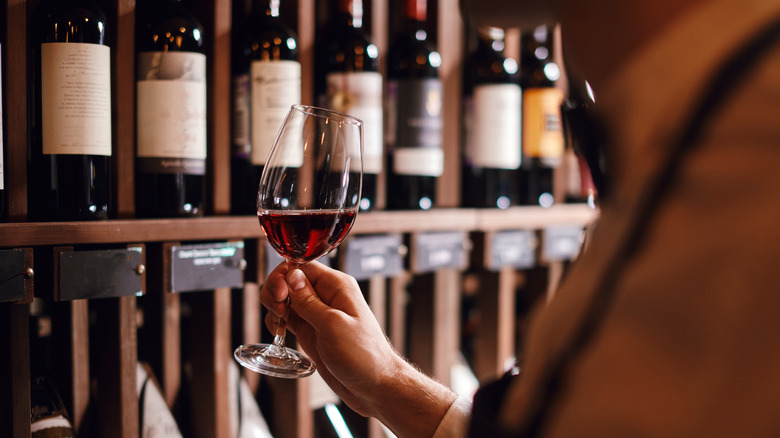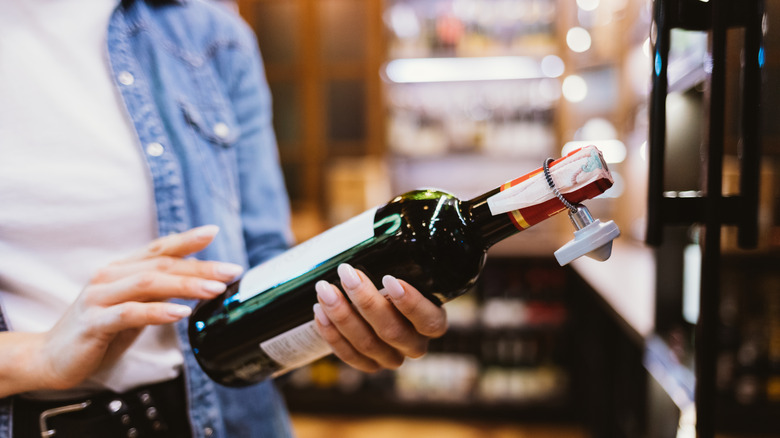The Scientific Reason Food Labels Affect How We Taste
What makes a food or beverage taste good or bad? Naturally, it's a matter of opinion, and different people will have different preferences for each of the five flavors: salty, sweet, sour, bitter, and umami. However, the way things taste has to do with a lot more than taste itself, and these flavors are only a small part of the overall equation. Texture is an incredibly powerful force in the way we perceive food, so much so that scientists believe our love of chocolate is largely dependent upon its smoothness. Appearance is another important factor, as evidenced by the union of food and social media. How many Instagram posts have set your mouth a-watering with only a snapshot of a dish?
It turns out that our sense of taste is rather easy to manipulate. This can play both to our advantage and our disadvantage. As unlikely as it may sound, the way that food is labeled can make us think it tastes better. The power of suggestion is so strong that it can be used to manipulate our senses. The downside is that food and beverage makers can use labels to convince us that something is of higher quality than it really is, leading us to spend more on items and think less critically about their ingredients and nutritional value. The upside is that we might potentially use the power of suggestion on ourselves to improve everyday meals. Here's the science behind this phenomenon.
Tricking your taste buds
Food and beverage labels affect the way we taste by manipulating our expectations. This is best exemplified by a 2007 study regarding wine. A group of test subjects were gathered at a fine-dining restaurant and served a prix-fixe menu that included a complimentary glass of wine. Diners either received wine labeled "from California" or wine labeled "from North Dakota." Which do you think tasted better? The answer seems pretty clear since California's Napa Valley is one of the most famous wine-producing regions in the world, and North Dakota's most famous environmental feature is quite literally called "the Badlands" (we don't want to knock North Dakota too much though; the roughrider state is the nation's leading producer of honey, spring wheat, durum wheat, and many other agricultural staples).
You've probably guessed that the test subjects were being duped. There was only one type of wine being served at that meal, and the differing points of origin were total fabrications. Nevertheless, the study showed that diners perceived a dramatic difference between the "California" wine and the "North Dakota" wine. Those who thought their drink came from the prestigious vineyards of the Golden State didn't just enjoy their wine more; They enjoyed the entire meal more. The "California wine" group ate 12% more of their meal on average than the North Dakota group. Remember that this was a prix-fixe menu, so everyone got the same food. The only difference between the test subjects was the way their wine was labeled.
The power of expectations
The secret behind the wine study lies in a psychological phenomenon known as expectation assimilation — the idea that our perceptions are partially pre-determined by our expectations. You would generally expect wine from the Napa Valley to be superior to wine made virtually anywhere else in the country. North Dakota has never had a reputation for wine production, so your expectations would understandably be lower if that's where you thought your wine was coming from. Each group of diners tasted the wine they expected to taste. And this isn't the only research to produce such results. In an utterly mind-boggling study, participants were placed in a dark room and given a cup of what they were told was strawberry yogurt. It was chocolate yogurt, but 59% of participants said it had an excellent strawberry taste.
So how can we apply this psychological trickery to our everyday lives? Set high expectations for your food, and you might enjoy it more. This doesn't mean you should lie to yourself, but focus on the best attributes of your food, like its freshness or the labor of love required to make it. If you're worried about higher expectations setting you up for disappointment, you really shouldn't be. Another study on expectation assimilation (this one focused on customers buying cameras) found that high expectations did lead consumers to place greater weight on the product's flaws, but not to a detrimental degree. Their overall experience was still positive.


